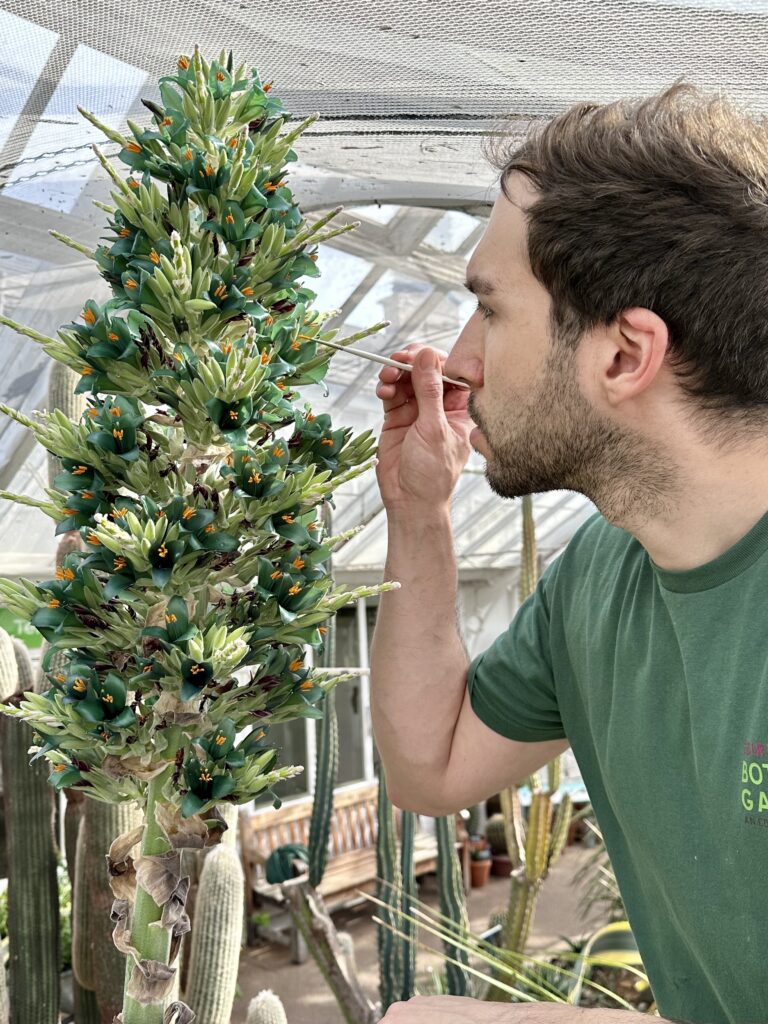
any beautiful things prove exceptionally worth waiting for. Among these, and particularly among the slow-moving wonders of nature, is the Sapphire Tower plant. This large plant is native to the footlands of Chilean mountain regions, growing in elevations of up to 2,200 meters (about 7,218 feet). It can also be found in greenhouses and botanical gardens around the world—including one specimen at The Birmingham Botanical Gardens in the UK. The Gardens, which have housed their Sapphire Tower plant for 20 years, recently announced an exciting and rare occasion: the blooming of the turquoise flowers.
The Sapphire Tower plant is scientifically known as Puya alpestris, a species among the bromeliad family of plant. It generally takes up to a decade for these plants to flower in nature. “It is very slow-growing, so to witness its spectacular blooms is both exciting and rare,” the Gardens’ senior glasshouse horticulturist Alberto Trinco explains in a statement. The flowers typically attract hummingbirds in the wild who serve as pollinators for the plant. However, the specimen in the Arid Glasshouse of the Gardens required an alternate solution for pollination. The Gardens set about pollinating the flowers by human hand using a small paintbrush.
This uniquely man-enabled process is in effect because the plant will soon die after its flowering period is complete. “Each flower only lasts a few days, giving us a limited window of time to give nature a helping hand,” Trinco explains. “In the absence of its natural pollinators, we will attempt some hand pollination instead.”
The gardening expert adds, “Hopefully, pollinating the flowers with the brush to obtain seeds will allow us to secure the presence of this amazing species in our collection for future generations to come and admire.”
For a very limited time, visitors will be able to catch a glimpse of the blooms at the Gardens, and it is advisable to check and see if blooms are still open before visiting. The next blossoming likely won’t occur until 2034. Like a solar eclipse, it’s a special and elusive sight to behold. If you get a chance to visit the Gardens, you can also check out their other magnificent plants and stop for tea at the tearoom to celebrate the Sapphire Tower plant.

Sharing is caring!
